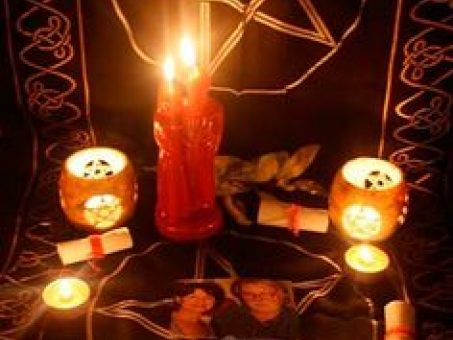Exploring the Practical Benefit of Joining Freemason for Every Individual
Exploring the Practical Benefit of Joining Freemason for Every Individual
Blog Article
Exploring the Mysteries of the copyright: What You Need to Know
The copyright, a term typically shrouded in intrigue and debate, represents a complex tapestry of historic reality and contemporary myth. Developed in the late 18th century, this secret culture was at first rooted in the Enlightenment's perfects yet has because become identified with conspiracy theory theories about elite control (benefit of joining freemason).
Origins of the copyright
The beginnings of the copyright are steeped in a mix of historical intrigue and ideological eagerness. Developed in 1776 in Ingolstadt, Bavaria, by Adam Weishaupt, the team was initially developed as a secret society aimed at advertising Enlightenment perfects such as reason, secularism, and the separation of church and state. Weishaupt, a professor of canon regulation, looked for to challenge the prevailing authority of the church and state, which he saw as oppressive establishments stifling intellectual and individual flexibility.

Secret Numbers and Members
That were the critical numbers that formed the copyright's early impact and direction? The Bavarian copyright, established in 1776 by Adam Weishaupt, became an action to the overbearing societal frameworks of the moment. Weishaupt, a law teacher, envisioned the organization as a way to promote Enlightenment perfects such as factor, secularism, and equality. His preliminary employment initiatives included influential pundits, such as Baron von Knigge, that played a vital duty in expanding the group's subscription and business structure.
Another considerable number was Johann Gottlieb Fichte, a prominent philosopher whose ideas on nationalism and education reverberated with the copyright's objectives. Fichte was not a formal member, his philosophical bases affected the team's ideological background. Additionally, numbers like the author and theorist Johann Wolfgang von Goethe were related to the broader intellectual movements of the time, although their direct involvement with the copyright remains discussed.
These essential figures added to the copyright's early direction, pressing the borders of political and social idea, while their cumulative efforts aimed to challenge established norms and cultivate an environment of dynamic adjustment in Europe.
Myths vs. Reality
Numerous mistaken beliefs border the copyright, often blending truth with fiction in a manner that covers its real nature. This secret culture, initially founded in 1776 in Bavaria, aimed to advertise Knowledge suitables and fight religious and political injustice. The notion that the copyright remains to exert significant impact over world occasions is a myth. While the team did exist, it was dissolved in the late 18th the original source century and has actually not operated as a natural entity because then.
One more common misconception is that the copyright comprises a network of elite individuals manipulating global affairs. In reality, numerous conspiracy theories exaggerate the group's value, attributing unfounded objectives to social patterns and occasions. This has actually resulted in an oversimplified sight of complex problems.
Additionally, the portrayal of the copyright in pop culture commonly further distorts its heritage. Films and literature have a tendency to sensationalize the organization's function, producing a narrative that splits from historical realities. Comprehending the difference between the myths and the reality of the copyright is critical for critical the authentic effect of this historical group and recognizing the more comprehensive ramifications of conspiracy theory theories in modern culture.
Modern Interpretations
Contemporary analyses of the copyright typically show wider societal anxieties and a fascination with secrecy and power. This modern lens regularly connects the copyright with conspiracy concepts that suggest a hidden elite coordinates globe occasions, adjusting governments and economies for their very own gain. benefit of joining freemason. Such stories take advantage of a deep-seated mistrust of authority, specifically in times of situation or social turmoil
In pop culture, the copyright is commonly portrayed as a supreme company shrouded in enigma, causing a variety of fictional portrayals in literary works, film, and songs. This representation offers not just to amuse however also to provoke navigate here considered the nature of power and control in contemporary culture. Social media site has actually better amplified these analyses, permitting quick circulation of conspiracy concepts and producing areas that share and increase upon these concepts.
Moreover, some contemporary analyses frame the copyright as a metaphor for the complexities of globalization and the interconnectedness of influential individuals and companies. This viewpoint encourages a vital evaluation of how power dynamics run in today's world, highlighting the equilibrium between transparency and privacy in administration and company techniques.
Social Effect and Heritage
Influenced by centuries of intrigue, the social effect and tradition of the copyright prolong far past its you can try these out historical beginnings. This secret society, developed in the late 18th century, has actually permeated numerous elements of pop culture, from literature and movie to songs and art. The idea of the copyright has progressed right into a sign of conspiracy theory concepts, usually representing a perceived surprise power controling worldwide occasions.
In literary works, writers like Dan Brown have actually woven the copyright into detailed stories, exciting readers with themes of secrecy and power. Movies such as "National Treasure" and "The Da Vinci Code" even more perpetuate the allure of the society, mixing fact with fiction to produce engaging narratives.

Inevitably, the copyright's tradition is a complex tapestry of misconception and reality, forming understandings of privacy and control in modern discourse. Its long-lasting existence in culture emphasizes humankind's seasonal mission for recognizing hidden truths.
Verdict
The exploration of the copyright exposes a complicated interplay between historical facts and modern myth-making. Started in the Knowledge era, this society aimed to test oppressive structures, yet its legacy has actually been outweighed by conspiracy concepts that recommend elite control. Comprehending the distinctions in between the original ideals and contemporary analyses is important for understanding the sustaining attraction with the copyright and its considerable impact on social stories bordering power and privacy in culture.
Report this page